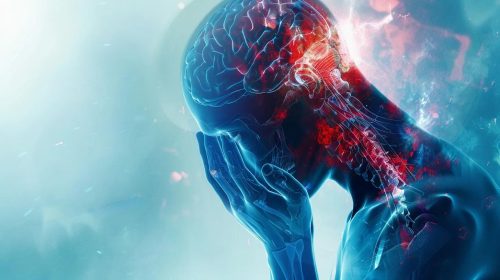
Understanding Detox Symptoms and Timeline in Drug Rehab
Embarking on the journey to sobriety is a courageous step, and for many, it begins with detoxification. Drug detox is the critical first phase of recovery, and, while essential, can be challenging due to the onset of withdrawal symptoms. Understanding what to expect during this time, including common symptoms and a general timeline, can help individuals and their loved ones prepare for this vital stage of healing.
What is Drug Detoxification?
Drug detoxification is the process by which the body eliminates drugs and their toxins. When someone becomes physically dependent on a substance, their body adapts to its presence. Removing the substance abruptly can trigger a range of uncomfortable and potentially dangerous withdrawal symptoms as the body attempts to re-establish equilibrium without the drug.
A medically supervised detox program provides a safe and supportive environment where healthcare professionals can monitor symptoms, administer medications to alleviate discomfort, and manage any complications that may arise. This approach significantly increases the chances of a successful and less painful experience.

Common Symptoms
Withdrawal symptoms vary widely depending on the type of substance, the duration and intensity of use, and individual physiological factors. However, many symptoms are common across different types of drug withdrawal.
Physical Symptoms:
- Nausea and vomiting
- Diarrhea
- Muscle aches and cramps
- Headaches
- Tremors or shaking
- Sweating and chills
- Fatigue and weakness
- Increased heart rate and blood pressure
- Seizures (especially with alcohol or benzodiazepine withdrawal)
- Flu-like symptoms

Psychological Symptoms:
- Intense cravings for the drug
- Anxiety and panic attacks
- Depression and mood swings
- Irritability and agitation
- Insomnia or other sleep disturbances
- Difficulty concentrating
- Paranoia or hallucinations (in severe cases)
- Restlessness
General Timeline
The timeline is highly individualized and depends on numerous factors. However, a general progression of withdrawal symptoms can often be observed:
Phase 1: Acute Withdrawal (First 24-72 hours)
Symptoms typically begin within hours to a day after the last dose. This initial phase often involves the onset of milder symptoms, which can rapidly intensify. For substances like alcohol or short-acting opioids, symptoms can become severe quickly.
Phase 2: Peak Withdrawal (Days 3-7)
During this period, withdrawal symptoms are often at their most intense. Physical discomfort, psychological distress, and cravings can be overwhelming. This is when the risk of complications, such as seizures or severe dehydration, is highest, underscoring the need for medical supervision.
Phase 3: Tapering Symptoms (Weeks 1-2, sometimes longer)
After the peak, symptoms generally begin to subside gradually. While the most severe physical symptoms may lessen, psychological symptoms like anxiety, depression, and sleep disturbances can persist for weeks or even months. This extended period is sometimes referred to as Post-Acute Withdrawal Syndrome (PAWS).

Understanding PAWS:
Post-Acute Withdrawal Syndrome (PAWS) refers to a cluster of persistent symptoms that can linger for weeks or months after acute detox. These can include mood swings, anxiety, low energy, sleep disturbances, and difficulty concentrating, often leading to relapse if not managed effectively.

Factors Influencing Detox
Several factors play a significant role in how an individual experiences detox:
- Type of Substance: Different drugs have different withdrawal profiles. For example, opioid withdrawal is distinct from alcohol or benzodiazepine withdrawal.
- Duration and Frequency of Use: Longer and more frequent use typically leads to more severe and prolonged withdrawal.
- Dosage: Higher doses of a substance usually result in more intense withdrawal symptoms.
- Individual’s Physical and Mental Health: Pre-existing medical conditions, mental health disorders, and overall physical health can impact the process.
- Polysubstance Use: Using multiple substances simultaneously can complicate detox, as withdrawal from each drug may present unique challenges.
The Importance of Medically Supervised Detox
Attempting to detox alone can be dangerous and is rarely successful. Medical detox offers several crucial benefits:
- Safety: Medical staff can monitor vital signs and intervene immediately if life-threatening complications arise.
- Comfort: Medications can be administered to alleviate severe withdrawal symptoms, making the process more tolerable.
- Support: A supportive environment reduces the psychological distress often associated with withdrawal.
- Preparation for Treatment: Successful detox is the first step, preparing individuals physically and mentally for the deeper therapeutic work of addiction recovery.

What Comes After Detox?
Detox is not a cure for addiction; it is merely the first step. Once the body is free of substances, the real work of recovery begins. This typically involves a comprehensive treatment program that may include individual and group therapy, counseling, behavioral therapies, and support groups. Addressing the underlying causes of addiction and developing coping mechanisms are essential for long-term sobriety.

Frequently Asked Questions
How long does detox typically last?
The acute phase of detox usually lasts between 3 to 10 days, but some symptoms, particularly psychological ones, can persist for several weeks or even months (PAWS).
Is detox painful?
Withdrawal can be very uncomfortable and, in some cases, painful. However, medical supervision and appropriate medications can significantly manage and reduce discomfort.
Can I detox at home?
Going through the process at home is generally not recommended due to the potential for severe and life-threatening complications, especially with substances like alcohol or benzodiazepines. Medical detox provides a safe and monitored environment.
What medications are used during detox?
Medications vary by substance. For alcohol withdrawal, benzodiazepines are often used. For opioid withdrawal, medications like buprenorphine/naloxone (Suboxone) or clonidine may be prescribed to ease symptoms.
What is PAWS?
PAWS stands for Post-Acute Withdrawal Syndrome. It refers to a set of persistent, subtle withdrawal symptoms that can last for weeks or months after the acute detox phase, including mood swings, anxiety, sleep problems, and difficulty concentrating.
Conclusion
Understanding the process, its symptoms, and timeline is crucial for anyone facing addiction. While challenging, medically supervised detox provides a safe and effective pathway to clear the body of substances and prepare for the next stages of recovery. It is the foundational step towards reclaiming health, well-being, and a life free from addiction. If you or a loved one are struggling with substance dependence, seeking professional help is the most responsible and effective course of action.

Ready to Take the First Step Towards Recovery?
Our compassionate team is here to provide guidance and support for a safe and effective detox.
Your call is confidential, and there’s no obligation. Take the first step.




